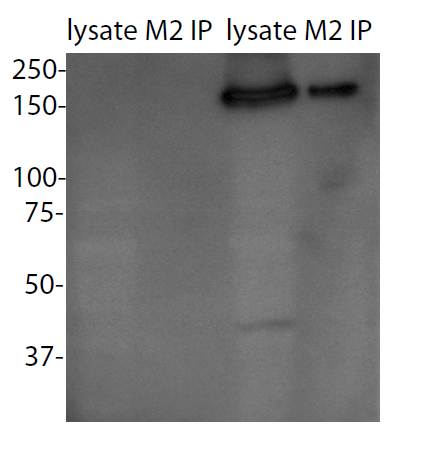Cat. #154472
Anti-RTL1 [13C11]
Cat. #: 154472
Sub-type: Primary antibody
Unit size: 100 ug
Availability: 10-12 weeks
Target: RTL1
Class: Monoclonal
Application: IF ; WB
Reactivity: Human ; Mouse
Host: Mouse
£300.00
This fee is applicable only for non-profit organisations. If you are a for-profit organisation or a researcher working on commercially-sponsored academic research, you will need to contact our licensing team for a commercial use license.
Contributor
Inventor: Tsui-Han Loo
Institute: A*STAR Accelerate Technologies Pte Ltd
Tool Details
*FOR RESEARCH USE ONLY
- Name: Anti-RTL1 [13C11]
- Tool sub type: Primary antibody
- Class: Monoclonal
- Purpose: Marker
- Conjugation: Unconjugated
- Reactivity: Human ; Mouse
- Host: Mouse
- Application: IF ; WB
- Description: RTL1 is an imprinted gene and is expressed from the paternal chromosome (Hagan et al., 2009; Lin et al., 2003). In human, excessive RTL1 expression and decreased RTL1 expression are relevant to upd(14)pat-like and upd(14)mat-like phenotypes, respectively(Ogata and Kagami, 2016). Upd(14)pat results in a unique phenotype characterized by facial abnormality, a small, bell-shaped thorax and abdominal wall defects, and upd(14)mat leads to pre- and postnatal growth failure and early onset of pube...
- Immunogen: Human RTL1 C-terminus fragment
- Immunogen uniprot id: A6NKG5
- Isotype: IgG2a lambda
- Recommended controls: SH-SY5Y cell
Target Details
- Target: RTL1
- Tissue cell line specificity: Mouse
- Target background: RTL1 is an imprinted gene and is expressed from the paternal chromosome (Hagan et al., 2009; Lin et al., 2003). In human, excessive RTL1 expression and decreased RTL1 expression are relevant to upd(14)pat-like and upd(14)mat-like phenotypes, respectively(Ogata and Kagami, 2016). Upd(14)pat results in a unique phenotype characterized by facial abnormality, a small, bell-shaped thorax and abdominal wall defects, and upd(14)mat leads to pre- and postnatal growth failure and early onset of pube...
Applications
- Application: IF ; WB
Handling
- Format: Liquid
- Unit size: 100 ug
- Shipping conditions: Shipping at 4° C
References
- Ogata et al. 2016. J Hum Genet. 61(2):87-94. PMID: 26377239.
- Ito et al. 2015. Development. 142(14):2425-30. PMID: 26138477.
- Riordan et al. 2013. PLoS Genet. 9(4):e1003441. PMID: 23593033.
- Byrne et al. 2010. PLoS One. 5(1):e8638. PMID: 20072617.
- Hagan et al. 2009. PLoS One. 4(2):e4352. PMID: 19194500.
- Sekita et al. 2008. Nat Genet. 40(2):243-8. PMID: 18176565.
- Lin et al. 2003. Nat Genet. 35(1):97-102. PMID: 12937418.




